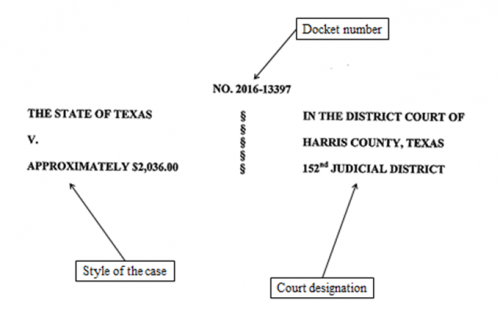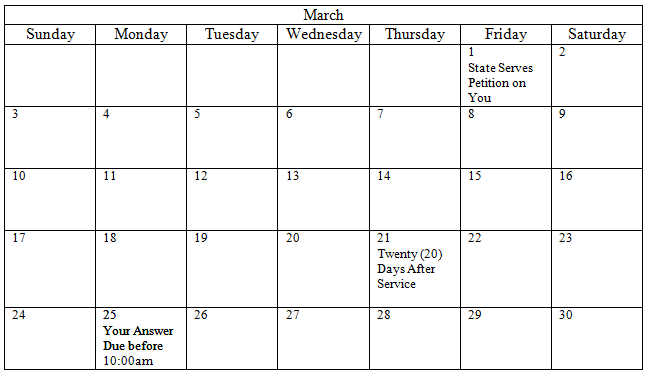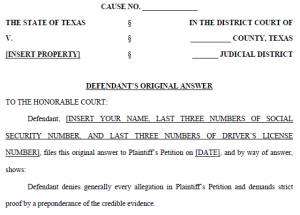Both you and the State must comply with the court’s rules, called the Texas Rules of Civil Procedure, throughout the case. The rules require that the State take certain steps before going to trial. You must also follow these rules during and after the trial.
Many, but not all, courts and judges will understand that you are not a lawyer and do not know all the rules. They will not expect you to know all the rules, but they will expect you to follow them to the very best of your ability, even though you do not have any legal training.
Some of these steps include filing documents with the court, called pleadings. This section of the Toolkit provides a description of some of the pleadings that you may need to file during the case, and provides sample forms to use in writing and filing those pleadings.
While it is impossible to draft an example pleading that will cover all possibilities in a case, these example pleadings may prove useful in defending an asset forfeiture case. You should carefully review each pleading and change it as needed, for your specific case.
For each pleading you file with the court, the document should contain the same caption that appears on the State’s Petition. The caption shows the docket number, style, and court designation. The picture below is an example of a caption.

You must also personally sign each pleading and give your home address, telephone number, and e-mail address, if you have one.
Filing an Answer
The first thing that will happen in an asset forfeiture case is the State will file a document called a Petition/Complaint (see Question 19) with the court, also sometimes called a "Notice of Seizure and Intended Forfeiture." The Petition will notify you that the State has seized your property and identify the specific property seized. The State must file the Petition with the court within 30 days after the date the property is seized in one of the district courts in the county where the State seized the property. After the State files the Petition, the State must serve you. This means that the State must have someone deliver a copy of the Petition to you, usually, in person.
After the Petition has been delivered to you, you must file an Answer with the same court. An Answer is a type of Pleading that lists the reasons for your defense in plain language. Your Answer should either (a) generally deny all the claims made in the State’s Petition or (b) specifically deny each claim made in the State’s Petition (deny each statement in the Petition, one by one). It is also okay for you to say that you do not have enough facts to confirm or deny the claims made by the State in the Petition. A statement that you do not have enough facts works as a denial. Additionally, your Answer should include each argument you will raise in the case, including each defense you claim to the State's accusations. You may include as many defenses as you would like. (See Question 18 for common defenses.)
You only have a limited amount of time to file an Answer, or else you may lose the case. You must file an Answer by 10:00 a.m. in the court where the Petition was filed on or before the first Monday after 20 days have passed since the Petition was served on you. For instance, if the Petition is served on you on Friday, March 1, you should file an Answer before 10:00 a.m. on Monday, March 25 because that is the first Monday that occurs after 20 days have passed (on Thursday, March 21) since the Petition was served on you.

If you do not file an Answer before the deadline, the State can request a Default Judgment, which means that the court rules in favor of the State simply because you did not file an Answer within the deadline. Even if you miss the deadline, you should still file an Answer with the court. If you miss the deadline, but file an Answer before the judge grants the State a Default Judgment, the court cannot give the State a Default Judgment and the case will continue.
The form in this Toolkit titled "Defendant’s Original Answer" is a model form for your Answer to the State’s Petition. Your Answer must also include (1) the last three digits of your driver’s license number, if you have one, and (2) the last three digits of your social security number, if you have one.

